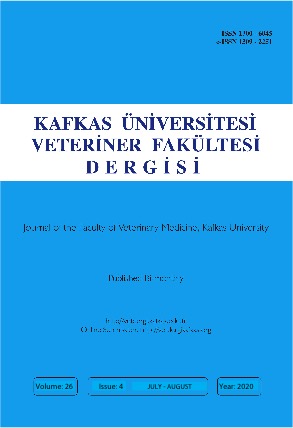
This journal is licensed under a Creative Commons Attribution-NonCommercial 4.0 International License
Kafkas Üniversitesi Veteriner Fakültesi Dergisi
2020 , Vol 26 , Issue 4
Geometric Morphometric Analysis of Cranium of Wolf (Canis lupus) and German Shepherd Dog (Canis lupus familiaris)
1Burdur Mehmet Akif Ersoy University, Department of Anatomy, Faculty of Veterinary Medicine, TR-15030 Burdur - TURKEY2Burdur Mehmet Akif Ersoy University, Department of Antropology, Faculty of Arts and Science, TR-15030 Burdur - TURKEY
3İstanbul University-Cerrahpaşa, Department of Anatomy, Faculty of Veterinary Medicine, TR-34320 İstanbul - TURKEY DOI : 10.9775/kvfd.2019.23841 In the study, it was aimed to investigate by geometric morphometric analysis to shape of the skull and mandible in adult male wolf and German Shepherd Dog. The skulls and mandibles were photographed from left side. The shape of skulls and mandibles were optimized by using tpsDig programme with 20 landmarks (in skulls), and 13 landmarks (in mandibles) on 2-D images. The skulls and mandibles were superimposed via PAST software and the principale component analysis was conducted. How and where the shape changes occurs in the cranium was shown using MorphoJ software. Also, morphological differences of the cranium between two groups were determined. As a result, German Shepherd Dog"s cranium were significantly seperated from the wolf"s cranium in respect of cranium shapes. In skull and mandible, about 70% and 78% of the total shape variation, is reflected by the first three principal components, respectively. Shape differences were most distinct in parietal, occipital, zygomatic, temporal bone and posterior mandible between two groups. The findings of the study are important in terms of evaluating the materials to be extracted from the area of archeological excavation and creating a database that will provide to prominent information about the history of domestication. Keywords : Wolf, German Shepherd Dog, Mandible, Skull, Geometric morphometry











